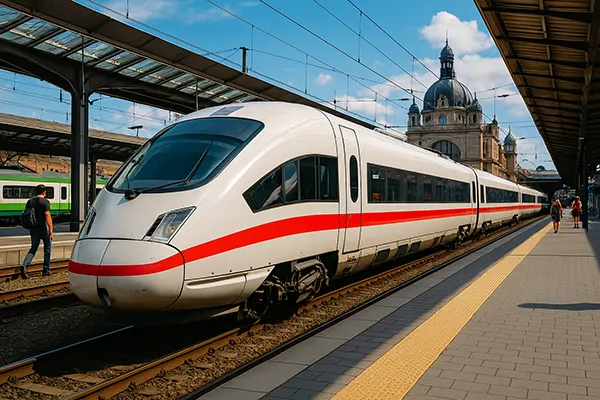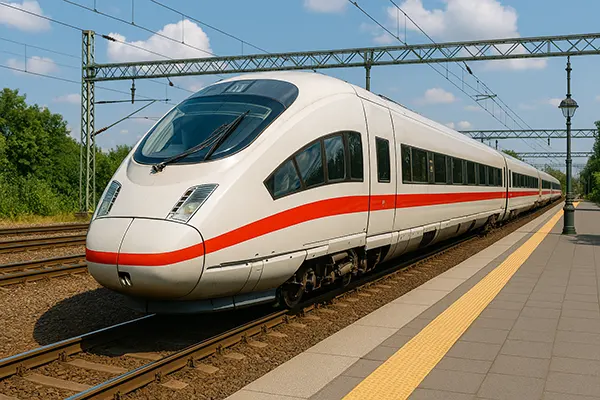
How to Travel Europe by Train: A Beginner’s Guide to Budget-Friendly Trips
Train travel across Europe is not just convenient and scenic — it’s also one of the most cost-effective ways to explore the continent, especially for first-time travellers. With a vast railway network and a variety of ticketing services available, hopping from one country to another can be simple and surprisingly affordable. Whether you’re planning a short weekend getaway or a month-long journey, understanding the best routes, tools, and strategies will help you travel smarter and cheaper.
Essential Train Travel Platforms for Europe
When planning your European rail adventure, knowing where to book your tickets and how to compare prices is key. Omio is one of the most popular platforms for comparing rail, bus, and air travel across Europe. It shows you multiple options for your route and allows you to book directly within the app, often with digital tickets available instantly.
Another reliable tool is Interrail (or Eurail for non-European residents), offering travel passes that let you explore multiple countries with flexible usage. For example, the Interrail Global Pass allows travel across 33 European countries and can be a great deal for longer trips. Passes range from 4 days in one month to continuous travel options, catering to all types of travellers.
FlixTrain, the rail extension of FlixBus, is ideal for budget-conscious travellers within Germany and some neighbouring countries. It’s known for low fares and modern trains, often significantly cheaper than Deutsche Bahn if booked in advance. Pairing these services with regional railways can unlock hidden gems at a fraction of the cost of flying.
Tips for Using Interrail and Omio Efficiently
Start by defining your travel route and dates. Interrail is flexible, but having a basic plan will help you decide which pass fits best. Use the Interrail Rail Planner App to check train times and make reservations when required — some high-speed and night trains require additional fees, so plan accordingly to avoid surprises.
Omio’s strength lies in real-time comparisons. It’s particularly useful when booking last-minute or when checking cross-border train connections that might involve multiple carriers. For example, when travelling from Amsterdam to Prague, Omio will show you direct trains, combinations, and alternative buses or flights.
Always book as early as possible. European rail tickets, especially on high-speed lines like France’s TGV or Spain’s AVE, can vary dramatically in price. Early bookings through Omio or national rail websites often secure the lowest fares — sometimes as low as €10-15 for long-distance routes.
How to Find the Cheapest Train Tickets
Timing is everything when it comes to finding cheap European train tickets. The earlier you book, the more likely you are to find “Sparpreis” or “Promo” fares, which are discounted limited-time offers. National railway websites like Deutsche Bahn (Germany), SNCF (France), and Trenitalia (Italy) frequently offer these deals weeks or even months ahead.
Consider travelling during off-peak hours and on weekdays, as these are generally less expensive than weekends or holidays. Trains departing early in the morning or later in the evening tend to have more availability and cheaper tickets.
If your itinerary is flexible, use price alert features on Omio or sign up for newsletters from railway operators. Promotions and flash sales are common, especially during the shoulder seasons (spring and autumn), when tourism is lower but the weather is still pleasant.
Budget-Friendly Routes Across Europe
Some of the cheapest train routes in Europe include Prague to Vienna, Berlin to Warsaw, and Milan to Venice. These routes are not only affordable but also relatively short, making them perfect for day trips or spontaneous escapes.
In Germany, the Deutschland-Ticket allows unlimited local and regional train travel for €49 per month. While not valid on high-speed ICE trains, it’s ideal for exploring cities and countryside alike on a budget. Austria and Switzerland also offer similar regional ticketing schemes.
Scandinavian countries, while generally more expensive, sometimes offer youth or group discounts. SJ (Swedish Railways) and DSB (Danish Railways) occasionally run “orange” ticket promotions, where seats on certain routes drop significantly in price if booked in advance.

Practical Tips for First-Time Train Travellers
First, always validate your ticket if required. Some countries like Italy and Austria require physical ticket validation before boarding — failure to do so could result in a fine, even with a valid ticket. Check local requirements carefully or opt for digital tickets when possible.
Second, pack light and smart. European trains often have limited luggage space, and carrying less will make your transfers between trains and stations more manageable. A carry-on-size suitcase or backpack is ideal, especially when navigating older stations without elevators.
Third, understand the train categories. Not all trains are created equal: high-speed trains (e.g. Thalys, ICE, AVE) are faster but often require reservations, while regional and local trains are slower but offer more flexibility and lower costs. Learn the acronyms and symbols — it will save you time and money during your trip.
Using Rail Passes vs Point-to-Point Tickets
If you plan to visit many cities in a short time, a rail pass like Interrail could save you hundreds of euros. However, for trips focused on one or two countries or cities, individual point-to-point tickets might be cheaper. Always compare both options based on your itinerary.
Rail passes offer the benefit of spontaneity — you can decide on the go where to head next, provided trains don’t require reservations. This is especially useful in countries with dense rail networks like Germany, the Netherlands, or Switzerland.
In contrast, point-to-point tickets reward those with a fixed plan. Booking in advance guarantees the lowest prices and ensures seat reservations when required. For many travellers, a mixed strategy — using passes in some countries and tickets in others — works best.




